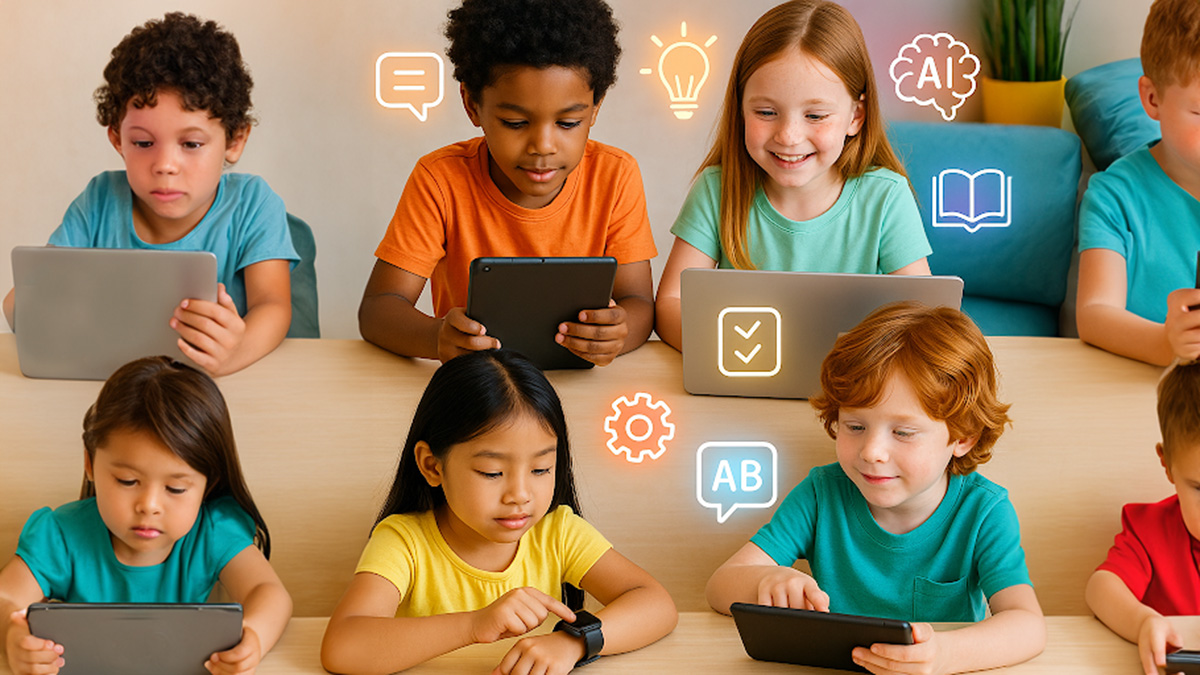AI for Neurodiverse Kids: How AI Can Support Children with ADHD, Autism & Learning Differences
Supporting a child with ADHD, autism, or learning differences is a unique journey: a mix of encouragement, adaptation, and understanding. With rapid advances in technology, parents now have more digital resources than ever, especially through AI-powered tools. This guide lays out practical ideas and specific examples, so parents can help neurodiverse kids prosper both at home and at school.
Understanding AI’s Role in Empowering Neurodiverse Children
AI isn’t just about computers or gadgets — it’s about offering personalized support to meet a child’s needs. For neurodiverse children, AI tools can shape learning experiences, ease daily routines, and help with communication. For instance, AI-powered learning platforms such as Google Gemini Kids or Duolingo use real-time feedback and tailor their activities to match a child’s skills and pace. Some AI-driven apps help improve focus with short, engaging exercises, while others support social communication or even assist in early detection of conditions through motion analysis or language patterns (Read more on Forbes about Gemini Kids).
AI Tools for ADHD: Building Focus and Keeping Routines
Children with ADHD often thrive with structure and positive reinforcement. AI can help create these supportive environments. Apps such as Suno AI or Brili offer gamified task lists, smart reminders, and customizable schedules. These programs adapt as your child’s progress and preferences change, providing gentle nudges and encouragement.
- For schoolwork, tools like Google Gemini Kids Edition allow kids to ask questions in natural language, break big assignments into manageable steps, and receive prompts to stay on track — all with safeguards for safety and privacy (see Gemini AI Kids: What it Means for Parents on Forbes).
- Focus-boosting wearables, integrated with AI, monitor activity and offer real-time feedback, reminding kids to stretch, take breaks, or transition between activities.
- Last fall, our family purchased a Moxie Robot for our oldest daughter, who we recently found out has ADHD, and for the few months Moxie was operational it helped her regulate some of her emotions with different breathing exercises, and calming techniques it taught her. (Embodied, the company that built Moxie, went out of business last November and had to shutdown the operations for the support and tech. They did provide a way to self-host the necessary programs to get Moxie operational again, so that will be a fun project for the kids and me to try soon!)
AI for Autism: Enhancing Communication and Social Connections
For children on the autism spectrum, AI can help with communication challenges, social stories, and sensory preferences.
- Speech-generating apps use AI to translate images or typed words into spoken language, supporting nonverbal kids in expressing their thoughts.
- Conversational AI bots can model dialogues or help children rehearse real-life scenarios before heading to school or a social event.
- Sensory-friendly music and relaxation apps employ AI to curate calming content based on your child’s responses, reducing anxiety and overstimulation.
- Early detection is making headway too: a recent example includes AI analyzing grasp patterns to help clinicians spot autism, opening doors to earlier intervention and tailored support (Learn more).
AI for Learning Differences: Personalizing Education
AI is particularly powerful for children with dyslexia, dysgraphia, or other learning differences.
- Reading Assistants: Tools such as Microsoft’s Immersive Reader or Lexia use AI to read text aloud, highlight words, and adjust reading levels in real time.
- Math and Writing Coaches: Programs like DreamBox and Grammarly for Education personalize lessons, break down problems, and offer encouragement.
- Adaptive Homework Help: AI-powered chatbots guide students step-by-step through tricky assignments, giving hints without just handing over the answers (for more, see Education Week’s coverage).
Simple Ways Parents Can Use AI Tools at Home
- Set routines with AI: Apps like Brili or Choiceworks can build daily visual schedules, making transitions easier and reducing stress.
- Use digital assistants (with safeguards): Voice-activated helpers like Alexa can remind kids about tasks or answer homework questions, but activate parental controls and set clear guidelines for use.
- Support social and emotional learning: Storytelling bots and “emotion coach” AI programs help kids identify, express, and manage feelings in a safe space.
Staying Safe and Involved: Upsides, Risks, and Family Tips
Parents play an essential role in guiding how kids use AI:
- Review privacy settings and data-sharing policies for each app.
- Use tools that encourage skill-building, creativity, and real-world interaction, rather than replacing human connection.
- Explore together: ask questions about what your child is learning or feeling with each app.
- Set screen time boundaries and balance tech use with hands-on activities and outdoor play.
Final Thoughts
Technology, when thoughtfully chosen, can add a layer of support for neurodiverse children as they grow. AI tools can make routines more predictable, lessons more engaging, and communication more accessible. With your involvement, these tech resources become not just convenience, but care and understanding tailored to your unique family.
Frequently Asked Questions
Q: Can AI replace in-person therapy or teaching for neurodiverse children?
A: AI is a helpful support tool, but cannot replace the expertise or care provided by teachers, therapists, and family members. Its best use is as a supplement, not a substitute.
Q: Are AI tools safe for young children?
A: Many are designed with safety in mind, but parents should check for privacy protections, age-appropriate content, and always preview apps before introducing them.
Q: How can I decide which app or tool is right for my child?
A: Think about your child’s unique challenges and interests. Test a few free options; include caregivers, teachers, and your child in the decision process wherever possible.
Q: Does AI increase children’s screen time?
A: Not necessarily. Many tools encourage short sessions and blend digital and real-world activities, but it’s still smart to establish screen limits and balance tech with offline fun.
For more on safe, positive tech in family life, see this related article: Google Gemini in 2025: How Families and Kids Can Safely Harness the Latest AI Innovations.


